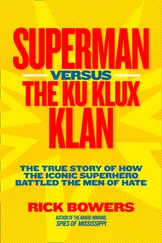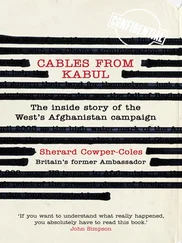Andrew Sorkin - Too Big to Fail - The Inside Story of How Wall Street and Washington Fought to Save the FinancialSystem--and Themselves
Здесь есть возможность читать онлайн «Andrew Sorkin - Too Big to Fail - The Inside Story of How Wall Street and Washington Fought to Save the FinancialSystem--and Themselves» весь текст электронной книги совершенно бесплатно (целиком полную версию без сокращений). В некоторых случаях можно слушать аудио, скачать через торрент в формате fb2 и присутствует краткое содержание. Жанр: Старинная литература, на английском языке. Описание произведения, (предисловие) а так же отзывы посетителей доступны на портале библиотеки ЛибКат.
- Название:Too Big to Fail: The Inside Story of How Wall Street and Washington Fought to Save the FinancialSystem--and Themselves
- Автор:
- Жанр:
- Год:неизвестен
- ISBN:нет данных
- Рейтинг книги:4 / 5. Голосов: 1
-
Избранное:Добавить в избранное
- Отзывы:
-
Ваша оценка:
- 80
- 1
- 2
- 3
- 4
- 5
Too Big to Fail: The Inside Story of How Wall Street and Washington Fought to Save the FinancialSystem--and Themselves: краткое содержание, описание и аннотация
Предлагаем к чтению аннотацию, описание, краткое содержание или предисловие (зависит от того, что написал сам автор книги «Too Big to Fail: The Inside Story of How Wall Street and Washington Fought to Save the FinancialSystem--and Themselves»). Если вы не нашли необходимую информацию о книге — напишите в комментариях, мы постараемся отыскать её.
Too Big to Fail: The Inside Story of How Wall Street and Washington Fought to Save the FinancialSystem--and Themselves — читать онлайн бесплатно полную книгу (весь текст) целиком
Ниже представлен текст книги, разбитый по страницам. Система сохранения места последней прочитанной страницы, позволяет с удобством читать онлайн бесплатно книгу «Too Big to Fail: The Inside Story of How Wall Street and Washington Fought to Save the FinancialSystem--and Themselves», без необходимости каждый раз заново искать на чём Вы остановились. Поставьте закладку, и сможете в любой момент перейти на страницу, на которой закончили чтение.
Интервал:
Закладка:
“Well, sir, the secretary of the Treasury and other members of Treasury were active participants during this ninety-six hours, as you describe,” he replied. “There were lots of discussions back and forth.
“Also, in any combination of this type, there are multiple terms and conditions. I think the perspective of Treasury was really twofold. One was the idea that Chairman Bernanke suggested: that a combination into safe hands would be constructive for the overall marketplace; and, number two, since there were federal funds or the government’s money involved, that that be taken into account. And Secretary Paulson offered perspective on that.
“There was a view that the price should not be very high or should be toward the low end and that it should be—given the government’s involvement, that that was the perspective. But with regard to the specifics, the actual deal was negotiated—transaction was negotiated between the Federal Reserve Bank of New York and the two parties.”
For the most part, the Fed, the Treasury, and the SEC held their own against the Banking Committee’s interrogation. But they did so largely by defending the Bear bailout as a once-in-a-lifetime act of extreme desperation, not as the expression of a nascent policy. Under the circumstances, it was a reasonable response to a run on a very large bank whose demise would disrupt the entire financial system.
Those circumstances, Geithner told the committee, were not unlike those of 1907, or the Great Depression, and he went on to draw a straight line between panic on Wall Street and the economic health of the country: “Absent a forceful policy response, the consequences would be lower incomes for working families; higher borrowing costs for housing, education, and the expenses of everyday life; lower value of retirement savings; and rising unemployment.”
So they’d done what they had to do for the good of the entire country, if not the world, as Steel explained. And thanks to their efforts, he confidently told the lawmakers, the hole in the dike had been plugged.

Jamie Dimon was searching for a metaphor.
As he sat in a conference room down the hall from Senator Charles Schumer’s office watching the morning’s proceedings on C-SPAN, he strategized with his communications chief and trusted confidant, Joseph Evangelisti. How could he best account for the low price he had paid for Bear without looking as if he had been given a gift, courtesy of taxpayers?
“The average person has to understand that we took a huge risk,” Evangelisti instructed him as they reviewed various approaches. “We’ve got to explain it in plain English.”
Unlike Steel, Dimon had not engaged in any Murder Board role playing in his own Park Avenue office. Instead, he chose to do some last-minute preparation in the conference room, which had been lent to him by a Senate staffer so he wouldn’t have to wait in the gallery.
Dimon came up with a simple, clear line that he thought explained the acquisition of Bear Stearns succinctly: “Buying a house is not the same as buying a house on fire.” That would do it; everyone would understand that.
The message he sought to convey was straightforward: Although Fed and Treasury officials may have deserved scrutiny for their actions, he hadn’t done anything out of the ordinary. It wasn’t his job to protect the interests of the U.S. taxpayer, only those of his shareholders. If anything, he was a little concerned that the Bear deal presented more problems for them than it was worth.
Despite his public show of humility, Dimon was well aware of what a coup the deal had been for him. From the perspective of the financial media, at least, the Bear acquisition was viewed as a home run. They had always had a bit of an obsession with him and tended to paint him as a glorified penny pincher, an executive who would cancel the office’s newspaper subscriptions to cut costs—not a real financial visionary. Now, with JP Morgan leapfrogging to the very top of the banking business, Dimon was being regarded as something akin to the reincarnation of John Pierpont Morgan, the nineteenth-century financier who helped ease the Panic of 1907.
Dimon, the New York Times said, “has suddenly become the most talked about—and arguably the most powerful—banker in the world today.” For the Wall Street Journal he was “quickly becoming Wall Street’s banker of last resort.” Barron’s opted for a simple “All hail Jamie Dimon!”
With all the adulation he had been receiving, Dimon had become almost giddy at the prospect of speaking at today’s hearing. While most CEOs dread being hauled in front of Congress—Alan D. Schwartz of Bear Stearns had spent days reviewing his testimony with his high-powered Washington lawyer, Robert S. Bennett—Dimon considered his first chance to testify in front of Congress to be a signal honor.
The night before the hearing, he called his parents to make sure they would watch it on TV.

Jamie Dimon’s success is not an enormous surprise, as he is a third-generation banker. His grandfather had immigrated to New York from Smyrna, Turkey, changed his name from Papademetriou to Dimon, and found work as a stockbroker, which at the time was hardly considered a glamorous job. Jamie’s father, Theodore—who met his mother, Themis, playing spin-the-bottle when they were twelve years old—was also a broker, and a very successful one. Theodore had done so well that he was able to move his family from Queens to an apartment on Park Avenue, where he raised Jamie and his brothers, Peter and Ted. One day, when Jamie was nine years old, his father asked his sons what they wanted to be when they grew up. Peter, the eldest, said he hoped to become a doctor. Ted, Jamie’s twin, said he didn’t know. But Jamie knew and announced self-assuredly, “I want to be rich.”
After attending the Browning School on Manhattan’s Upper East Side, Jamie studied psychology and economics at Tufts University; later, at Harvard Business School, he developed a reputation—as much for his arrogance as for his intelligence. Just a few weeks into the fall semester of his first year there, the professor in an introductory class on operations was going through a case study on supply chain management at a cranberry cooperative. Midway through Dimon stood up and interrupted him with, “I think you’re wrong!” As the startled professor looked on, Dimon walked to the front of the class and wrote the solution to the supply problem on the blackboard. Dimon was right, the professor sheepishly acknowledged.
After a summer working at Goldman Sachs, Dimon sought career advice from the portly, cigar-chomping, serial deal maker named Sandy Weill. Jamie’s family had become close to the Weills in the mid-1970s, after Sandy’s brokerage firm acquired Shearson Hammill, where Dimon’s father was a top broker. While at Tufts, Dimon had even written a paper on the Hayden Stone takeover of Shearson, which his mother showed to Weill, who was impressed with its analysis.
“Can I show it to people here?” Weill asked Dimon.
“Absolutely,” Dimon replied. “Can I have a summer job?” Weill was happy to oblige.
After graduating from Harvard Business School, Dimon received offers from Goldman Sachs, Morgan Stanley, and Lehman Brothers. Weill invited Dimon to his Upper East Side apartment and made his own offer: a position as his assistant at American Express, where Weill was now a top executive after having sold Shearson for nearly $1 billion. “I won’t pay you as much,” Weill told the twenty-five-year-old, “but you’re going to learn a lot and we’re going to have a lot of fun.” Dimon was sold.
Читать дальшеИнтервал:
Закладка:
Похожие книги на «Too Big to Fail: The Inside Story of How Wall Street and Washington Fought to Save the FinancialSystem--and Themselves»
Представляем Вашему вниманию похожие книги на «Too Big to Fail: The Inside Story of How Wall Street and Washington Fought to Save the FinancialSystem--and Themselves» списком для выбора. Мы отобрали схожую по названию и смыслу литературу в надежде предоставить читателям больше вариантов отыскать новые, интересные, ещё непрочитанные произведения.
Обсуждение, отзывы о книге «Too Big to Fail: The Inside Story of How Wall Street and Washington Fought to Save the FinancialSystem--and Themselves» и просто собственные мнения читателей. Оставьте ваши комментарии, напишите, что Вы думаете о произведении, его смысле или главных героях. Укажите что конкретно понравилось, а что нет, и почему Вы так считаете.












